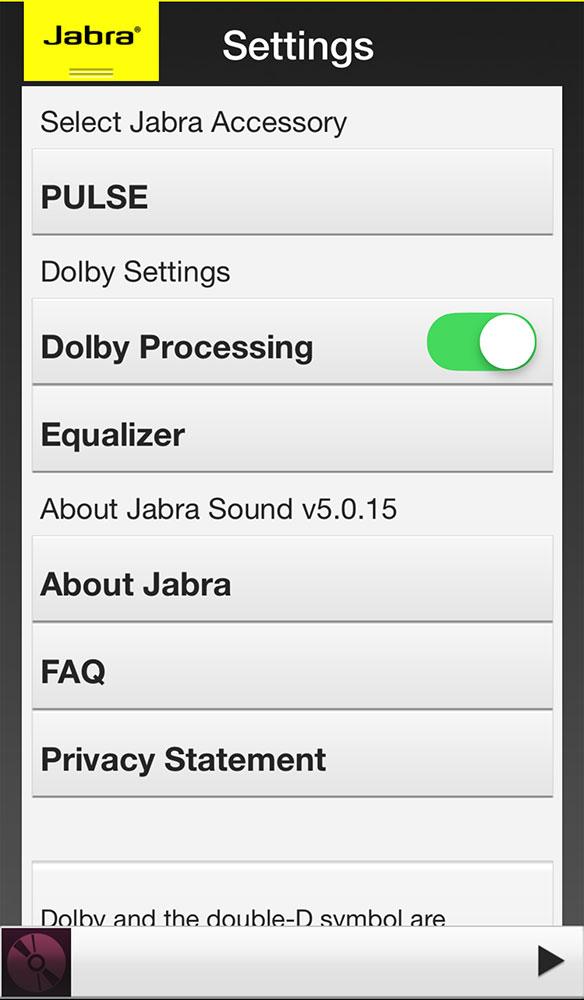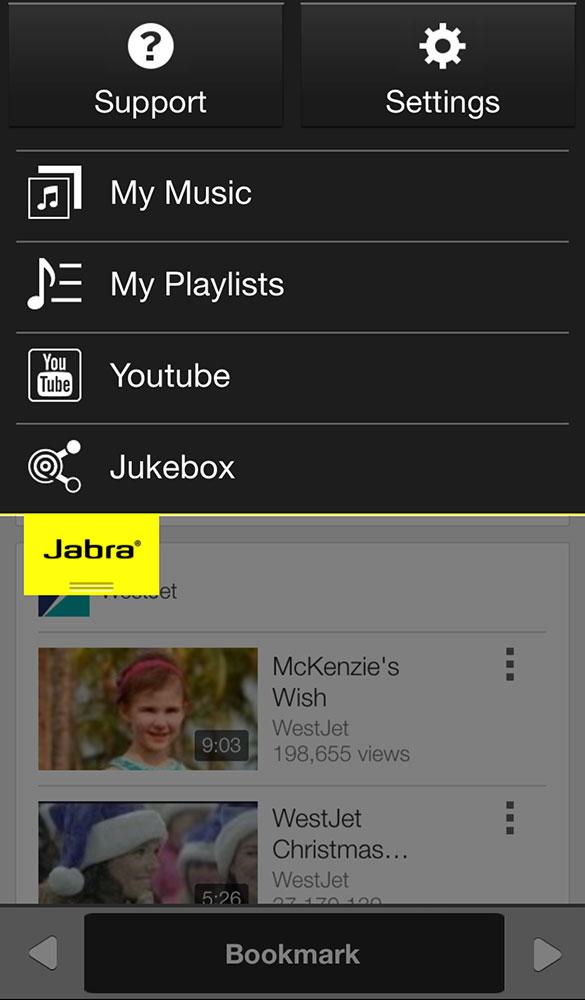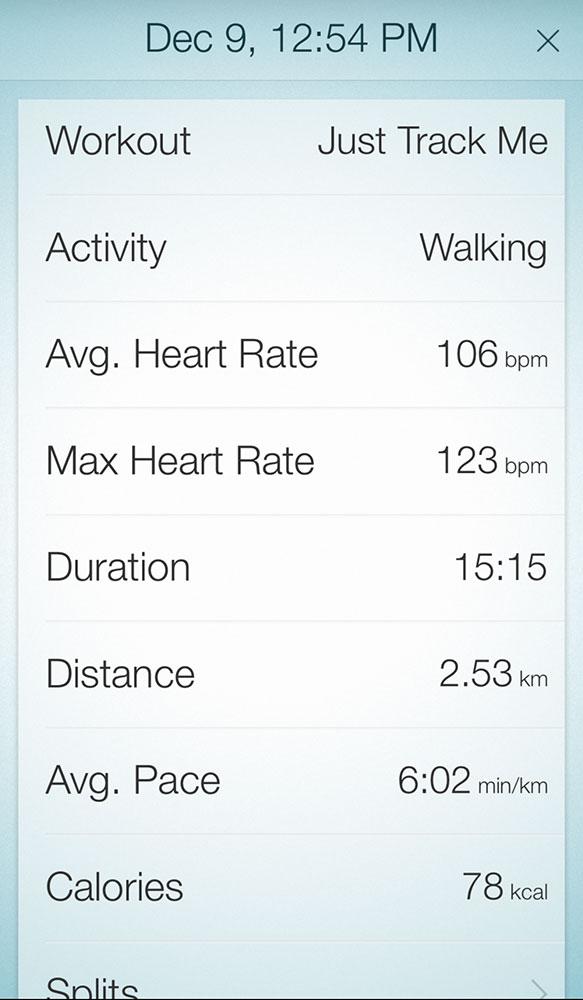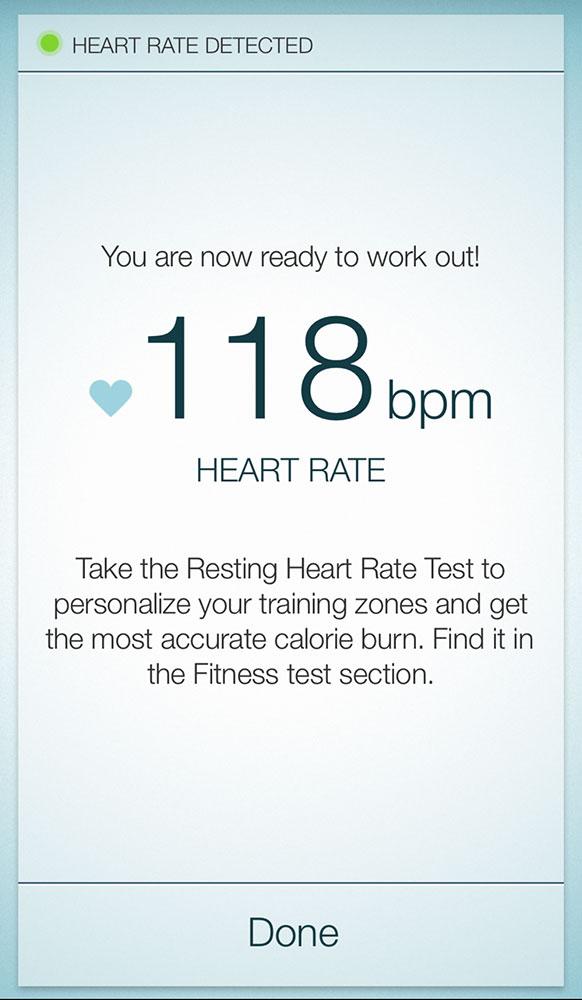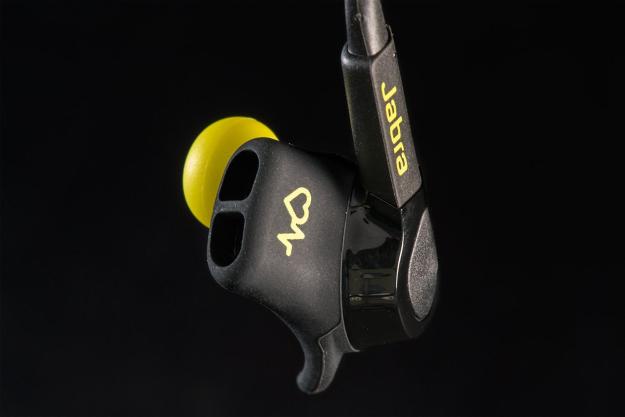
“Jabra’s Sport Pulse Wireless earbuds deliver fantastic fitness functionality, but a poor seal makes for sub-par sound quality.”
- Effective heart rate and motion tracking
- Secure fit
- Myriad music playback options
- Integration with Siri and Google Now
- Effective Jabra Sport Life app
- Poor seal compromises sound
- Battery life limited to four hours
- Jabra Sound app is unnecessary
- Expensive
Everyone wants to make some kind of fitness or activity tracker these days, and since wristbands are an easy target, we tend to see a lot of them. As music fans, we tend to prefer Jabra’s take: Why not fold fitness tracking into a device you’d probably already be wearing when exercising?
Buy it now from:
From that notion the Sport Pulse Wireless were born, a pair of Bluetooth-enabled earbuds that not only pump out tunes, but are filled with all the fittings of a fitness band. The good news is, the built-in heart rate monitor, motion sensor, and Jabra’s fitness app are all excellent, making these buds a top pick in the fitness category. The bad news, our enthusiasm wanes a bit once the music starts.
Out of the box
If you’re wondering what the Sport Pulse Wireless look like, you need only flip open the box’s front panel and take a peek inside. Within the compartment housing the buds themselves are a small manual with a voucher for a free download of the Jabra Sound app for iOS or Android. The box underneath stores a small carrying case meant to transport and protect the Sport Pulse. Inside that case is a short micro USB charging cable, four plastic clips (to keep the wires from dangling too much), four sets of “earwings,” and two extra sets of yellow buds, or eargels, as Jabra calls them. The case itself has a mesh pocket to hold some of these peripherals inside with the Sport Pulse themselves.
Features and design
The challenge with any pair of Bluetooth earbuds is making them both comfortable and sturdy enough to stay in place during any and all movement, but with activity tracking features on board, security becomes even more urgent. Perhaps that explains why Jabra included so many sets of earwings — some with fins to nestle into the ear’s inner rim for support. The thinking seems to be that there has to be something in that mix of sizes and shapes to snugly fit anyone.
The earwing gels are actually a nice complement to the hard plastic earpieces we’re accustomed to seeing; one on the right side covers a micro USB charging port, while the left wing partially obscures the buds’ heart rate monitor.
The two buds are linked together by a 21-inch cable with a three-button inline remote/microphone situated a few inches below the right earpiece. A longer press on the main button can turn the headset on and off. A slightly shorter hold activates a phone’s voice assistant, like Siri or Google Now. Simple presses can play and pause, or accept or end a call. A longer press on either of the volume buttons can skip or go back a track when listening to music.
The cable’s length can be adjusted using small clips to accommodate wearing it under your chin or around your neck. Those clips are small and easy to lose, so it’s a good thing Jabra included a few extras just in case.
Under the hood, the Sport Pulse Wireless support Bluetooth 4.0, NFC pairing, and some digital signal processing.
Setup
When you power the Sport Pulse Wireless up, they awaken in pairing mode. Within seconds, we were paired to an iPhone 6 Plus. A voice prompt confirmed the pairing and we were off and running — literally. Well, almost. Despite the fact that these headphones device and music app-agnostic, putting their built-in sensors to work requires Jabra’s free Sport Life app, so we couldn’t start moving just yet. Here, a pleasant British female voice confirmed the app detected a heart rate. At this point, we opted to take a two-minute Resting HR (heart rate) test to provide a baseline number for the app to reference once we started working out.
The Sport Life app interfaced directly with our phone’s music library.
And that’s just the beginning of the calibration process. Jabra also allows for an Orthostatic HR test, which requires you to lay down for 15 minutes and then stand up for 15 seconds to determine what your training level is. A Rockport HR test only requires walking for a mile at a comfortable pace to measure oxygen consumption for more accurate calorie intake readings. All easy enough for us to do, even on a treadmill if necessary.
The left earbud has a button on its face that can start and stop a workout with a long press. A quick press triggers that British voice again, listing off how much time has elapsed since you started your workout, what your current heart rate is and what “training zone” you’re currently in — light, fat burn, cardio, intense or maximum.
To ensure we were on the right path to testing everything out, we upgraded the headset’s firmware and made sure we had the latest version of the app, too. The firmware upgrade required tethering to a computer and installing it that way, which was an easy process. We also found that the heart rate monitor is detectable by other apps that support such features, so it is possible to use these buds with apps you may prefer to Jabra’s Sport Life.
Conveniently, the Sport Life app interfaced directly with our phone’s music library, including the option to link that library with the Jabra Sound app. The voucher we found in the box gave us a free download of the full version that regularly sells for $5.00, and its basic purpose is to improve audio fidelity. We tried the app along with various other ways to listen to tunes while breaking a sweat and, frankly, we were a little turned off by what we heard.
Audio Performance
The activity tracking features found in the Sport Pulse Wireless are impressive, and we got used to them pretty quickly, rarely having to look at our phone screens to gauge progress. Unfortunately, we were hard-pressed to feel as excited about music playback.
Music was audible and clear for the most part, but we had a difficult time achieving a tight seal, and as we’ve noted in nearly every in-ear headphone review we’ve produced, a solid seal is crucial for decent sound quality. Our biggest problem was with getting decent low end. We jiggled the buds any which way into our ears to see if we could stop the noise bleed, but heard little improvement. We tried all three sizes of eartips included in the package, and still struck out.
We soon realized that the eargel buds Jabra includes with this headset are shorter and more recessed than most earbuds. In a somewhat unscientific test, we replaced Jabra’s buds with a same-size pair from Sennheiser that fit the mold of what we had in mind. We also tried it with a pair each from House of Marley and Klipsch and the results still weren’t especially encouraging. The seepage was slightly alleviated, though not enough to suggest we found a workable solution.
The DT Accessory Pack
Up your game and the get the most out of your gear with the following extras, hand-picked by our editors:
Belkin EaseFit Armband ($13)
For all-weather situations, strap your phone on with this armband, compatible with iPhone 5, 5S, 5C.
Tuna Belt Armband for iPhone 6 ($17)
An all-weather armband for the iPhone 6.
EasyAcc Brilliant Ultra Slim Dual USB portable charger ($25)
Keep charged while pounding the pavement.
With all of that said, it’s worth noting that the Sport Pulse Wireless will fit some better than others. We recommend you try before you buy, if at all possible. After all, they do go for $200.
While we’re discussing limitations, we should also note that the Sport Pulse Wireless’ battery life works out to be about 4 hours in practical use scenarios. This is on par with most Bluetooth earbuds (because you’ve only got so much room for a battery) but those with marathon ambitions either need to seriously step up the pace, or expect the buds to peter out before the finish line.
Conclusion
We wish the Sport Pulse Wireless fit and sounded better. We’re not applying audiophile principles here, it’s just that when music sounds empty and distant, it tends to suck the wind right out of your sails … and your workout. Still, it could be argued that $200 is a fair price to pay just for the fitness functions these earbuds provide, and wirelessly, at that.
Bottom line: If you prioritize fancy fitness functions over sound quality, the Sport Pulse Wireless could be your new favorite workout partner. But if you crave the motivation music provides when the going gets tough, you’ll want to strap on a fitness band and find some better buds.
Highs
- Effective heart rate and motion tracking
- Secure fit
- Myriad music playback options
- Integration with Siri and Google Now
- Effective Jabra Sport Life app
Lows
- Poor seal compromises sound
- Battery life limited to four hours
- Jabra Sound app is unnecessary
- Expensive

